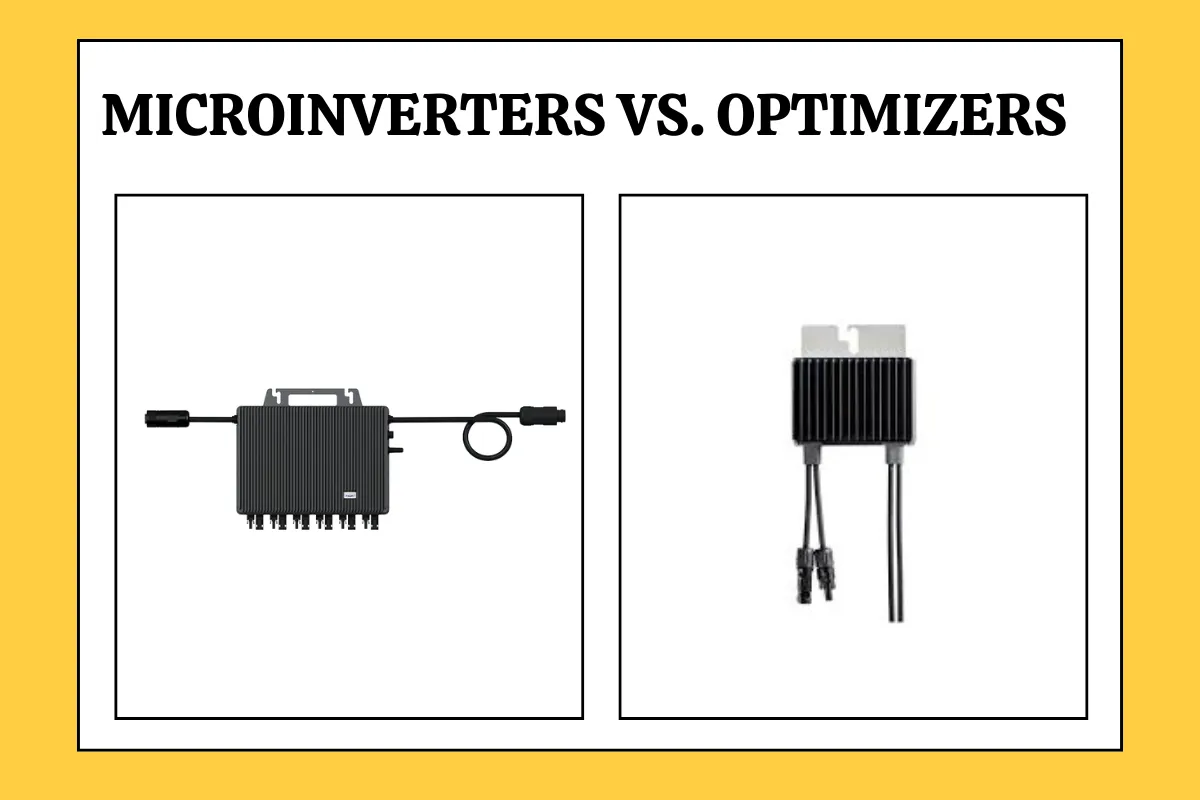Easy Solar Kit (with microinverter)
 LEARN DETAILS
LEARN DETAILS
Table of contents
The solar energy industry has evolved rapidly, with innovations like microinverters and power optimizers revolutionizing how photovoltaic (PV) systems generate and manage electricity. Both technologies address the limitations of traditional string inverters by enhancing energy harvest, especially in shaded or complex rooftop environments. However, businesses and installers often face confusion when choosing between microinverters vs optimizers—a decision that impacts system efficiency, cost, and long-term ROI.

Understanding Microinverters and Power Optimizers
Key Differences Between Microinverters and Power Optimizers
Performance and Energy Harvest in Different Scenarios
Costs and Long-Term Financial Considerations
Reliability and Maintenance Over Time
Scalability and Adapting to Future Needs
Microinverters and power optimizers are module-level power electronics (MLPE) that maximize solar panel output, but they operate in distinct ways.
Microinverters are small devices attached to individual solar panels. They convert DC electricity to AC directly at the panel, eliminating the need for a centralized inverter. This architecture ensures that shading or debris on one panel doesn’t drag down the entire system’s performance. Leading manufacturers offer plug-and-play solutions designed for residential and small commercial installations.
Power optimizers condition DC power at the panel level before sending it to a string inverter. They adjust voltage and current to maximize energy harvest but rely on a central inverter for DC-to-AC conversion. This hybrid approach balances cost and performance, making optimizers popular for medium to large-scale projects where consistency in sunlight exposure is expected.
Now that we’ve explored the core functions of these technologies, let’s examine their key differences in real-world applications.
The primary difference lies in where DC-to-AC conversion occurs: microinverters handle it per panel, while optimizers defer it to a central inverter.
System Architecture:
Microinverters: Each panel operates independently, producing AC electricity on-site.
Power Optimizers: Panels send optimized DC power to a centralized inverter for conversion.
Impact of Shading:
Microinverters isolate underperforming panels, ensuring shaded or damaged units don’t affect the entire array.
Optimizers reduce losses from shading but still depend on the central inverter’s efficiency to manage fluctuations.
Monitoring Capabilities:
Both technologies offer panel-level monitoring, but microinverters provide more granular insights into AC output and individual panel health.
With these structural differences in mind, it’s essential to evaluate how they translate to actual energy production and efficiency.
Microinverters typically outperform optimizers in shaded or mismatched panel conditions, while optimizers excel in large, uniform arrays with consistent sunlight.
Recent studies comparing micro inverter vs power optimizer systems reveal significant performance variations under different conditions:
| Scenario | Microinverters | Power Optimizers |
|---|---|---|
| Heavy Shading | 92% efficiency | 85% efficiency |
| Uniform Sunlight | 98% efficiency | 97% efficiency |
| Partial Panel Failure | Zero system impact | Minimal system impact |
Key Takeaways:
Microinverters are ideal for residential rooftops with obstructions like chimneys or trees.
Optimizers are better suited for commercial installations with uniform panel layouts and minimal shading.
While performance is critical, financial factors like upfront costs and long-term savings also play a pivotal role in decision-making.
Optimizers generally have lower upfront costs, but microinverters may offer better ROI in environments prone to shading or panel mismatch.
Installation Expenses:
Microinverters: 0.15–0.25 per watt due to labor-intensive AC wiring.
Optimizers: 0.10–0.18 per watt, leveraging simpler DC configurations.
Lifespan and Replacement Costs:
Microinverters: Often last 25 years, aligning with solar panel warranties.
Optimizers: Paired with central inverters that typically require replacement every 12–15 years, adding 1,500–3,000 per replacement.
Case Study: A 10 kW solar installation in a shaded residential area:
Microinverters: Higher initial cost (2,800more)butsave6,200 over 25 years by avoiding inverter replacements.
Optimizers: Lower upfront investment but higher lifetime maintenance expenses.
Financial planning must also account for reliability and maintenance, which influence total cost of ownership.
Microinverters have fewer failure points due to decentralized architecture, whereas optimizers depend on the reliability of a central inverter.
Failure Rates:
Microinverters: Annual failure rates as low as 0.05% for modern models.
Optimizers: Slightly higher failure rates (0.1%) combined with central inverter risks (2–5% failure rate over a decade).
Warranty Coverage:
Microinverters: Typically include 25-year warranties.
Optimizers: Optimizers may have 25-year warranties, but central inverters are often covered for only 12 years.
Beyond reliability, scalability and adaptability to future technologies like energy storage are crucial for long-term success.
Microinverters simplify system expansion, while optimizers integrate more seamlessly with DC-coupled battery storage.
Expanding Solar Arrays:
Microinverters: Adding new panels requires minimal system reconfiguration.
Optimizers: Inverter capacity must be checked to avoid overloading.
Battery Compatibility:
Optimizers: Pair naturally with high-voltage DC batteries, streamlining energy storage integration.
Microinverters: Require AC-coupled batteries, which can add complexity and cost.
Choosing between microinverters vs optimizers hinges on site-specific factors like shading, budget, and scalability needs. Microinverters deliver superior performance in challenging environments, while optimizers balance cost and efficiency for larger installations. By analyzing power optimizer vs microinverter systems through technical, financial, and operational lenses, businesses can optimize their solar investments for decades.

